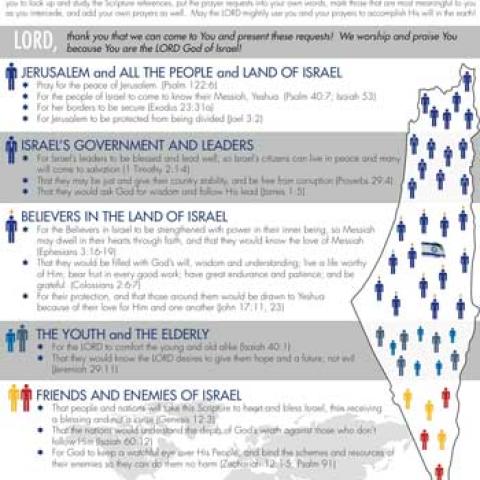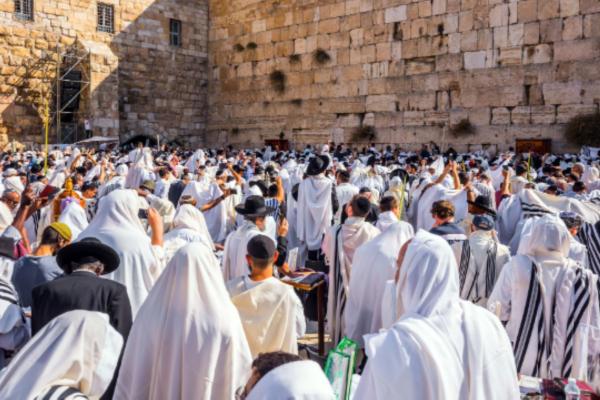Even as England struggled to balance the conflicting promises they had made to Jews and Arabs regarding the Holy Land, a new threat began looming across Europe. The anti-Semitism that had retreated to the shadows following the Dreyfus Affair returned with a vengeance during the Great Depression. The governments of Europe tottered from the financial strain, and in 1933 a charismatic leader named Adolf Hitler took power in Germany. What he didn’t know was that he was about to set in motion a dramatic turn in the history of Israel.
Hitler’s National Socialist German Workers Party, the Nazis, had attempted to overthrow the German government in the 1920s. While Hitler was serving a jail sentence for his part in the failed coup attempt, he wrote Mein Kampf (My Struggle) which laid out his plan to free Germany from “the Jewish peril.” Hitler was known to be a strong believer in the fraudulent Protocols of the Elders of Zion. That book, published in Russia in 1903, claimed to be the minutes of secret meetings of Jews plotting to take over the world. Though quickly revealed as a thinly disguised forgery, the book was widely accepted by those who hated the Jews and spread quickly in a climate of growing anti-Semitism throughout Europe.
While Hitler worked to rebuild Germany’s tattered economy, he also instituted a systematic program of discrimination and isolation against the Jews. Unfortunately, this was not new in the history of Israel. Laws were passed restricting the rights of Jews to work and own property. In 1935 the Nuremberg Laws stripped Jews of their citizenship. In 1938, Kristallnacht—the night of broken glass—unleashed unbridled nationwide violence and terror against the Jews. Kristallnacht is considered the beginning of the Holocaust.
Squads of storm troopers roamed the streets, looting and destroying thousands of Jewish-owned shops, homes, and synagogues. Dozens of Jews were killed, and thousands more rounded up and placed in concentration camps. It was a chilling preview of what was to come. After World War II started and the Nazis spread their control across Europe, Hitler’s attention turned to a “Final Solution” for the “Jewish problem”—the term Hitler used to describe his attitude toward the Jews. Mass extermination camps were built at places like Auschwitz, where Jews were shot, beaten to death, and gassed. By the time the Allied Forces liberated the death camps in 1945, some six million Jews had been murdered.
Following the war, Europe lay in ruins. Even the victorious nations like England and France had suffered enormous financial, structural, and military losses. None of the nations of Europe was prepared to handle the flood of refugees seeking to return to their homes from the camps. This chaos and the massive loss of Jewish life made the establishment of a national homeland in Israel more critical than ever for the survivors. But that desire faced strong opposition.
The British had to deal with growing pressure from the Arab nations to halt the inflow of Jewish refugees into Israel. Britain established internment camps on the island of Cyprus for Jews who attempted to immigrate to Israel in violation of its policy. The camps operated from August 1946 to January 1949, holding over 50,000 persons. Many who survived the Holocaust ended up dying in these camps.
In July of 1947, the British navy intercepted the refugee ship Exodus bound for Israel with more than 4,500 Jews on board in international waters. British sailors forcibly boarded the ship, killing two passengers and one crewmember and forced everyone on board to return to Europe. Caught between growing pressure from the Arabs and constant attacks on their police and military from Jewish resistance groups such as the Haganah, Irgun, Lehi, and Palmah, the British grew weary trying to keep order in the Holy Land. Finally, they turned to the United Nations in hopes of a solution.
On November 29, 1947, the United Nations voted on a partition plan known as UN Resolution 181. This plan, adopted by a vote of 33-13, divided what was then known as “Mandate Palestine” into two states, one for the Jews and one for the Arabs. The Jewish state was to receive 56% of the total land area, though it excluded Jerusalem, which was to be administered by the UN. The plan, accepted by most of the Jewish population but rejected by the Arabs, was set to take effect in October 1948. Before that happened, however, Great Britain announced it would unilaterally withdraw all troops and officially end the British Mandate on May 14, 1948.
Despite that announcement and their intention to leave, the British refused to hand over any authority or territory to Jewish control ahead of their departure. As a result, the fledgling Israeli government, under the leadership of David Ben-Gurion, was forced to make preparations for the war they knew would follow the British departure. With only a tiny, untrained army and very limited resources, the vastly outnumbered Jewish population turned to supporters in America and other countries to raise the funds needed to purchase arms and military supplies. These contraband items then had to be smuggled into the country.
On May 14, 1948, the history of Israel began a new chapter. Standing in front of a portrait of Theodor Herzl, Ben-Gurion read Israel’s Declaration of Independence that had been approved by the People’s Council. The ceremony was broadcast live to the nation on Voice of Israel radio. After all the members present had signed the document, Ben-Gurion declared, “The State of Israel is established!”
Read “History of Israel, Part 1: A Wandering Nation,” and “History of Israel, Part 2, The Birth of Zionism.”
Get the Israel Prayer Guide
Do you want to know how to pray for Israel in greater detail and depth? Jewish Voice Ministries has put together this Intercessory Prayer Guide for Israel that provides focused, targeted requests to help you pray for the nation of God’s People. We hope this prayer guide can help both Messianic Jews and Christians pray their support for Israel.













